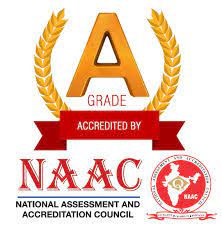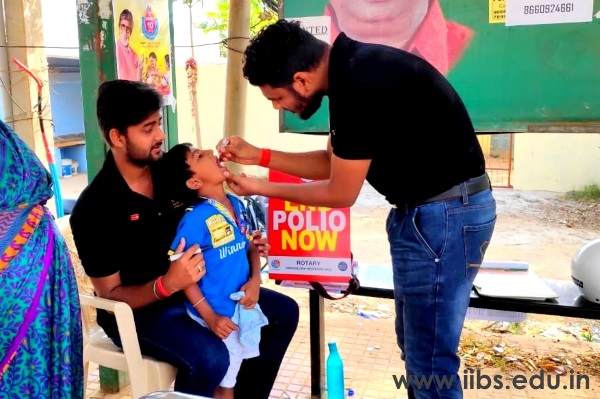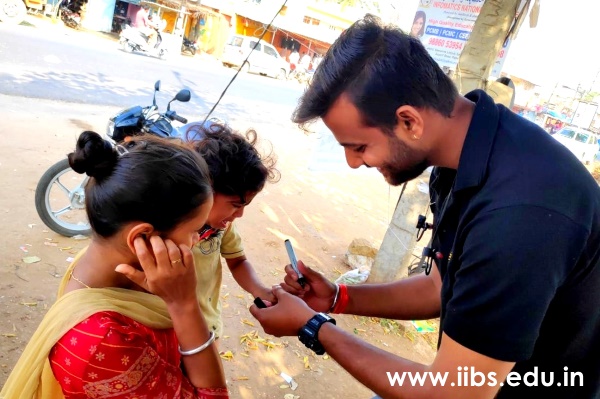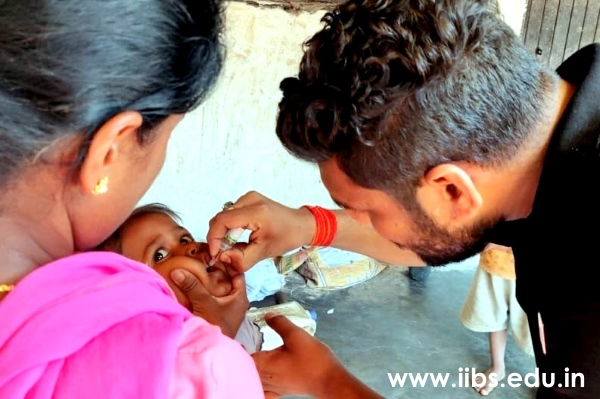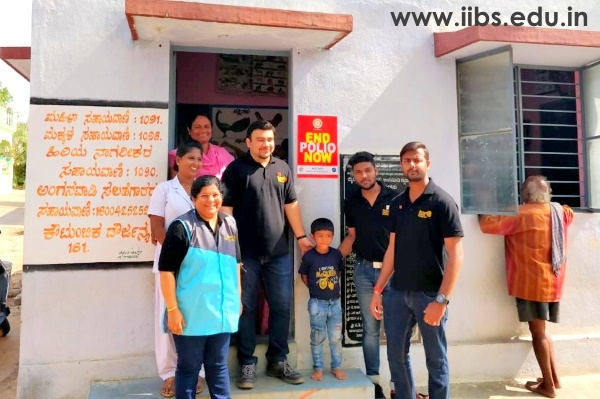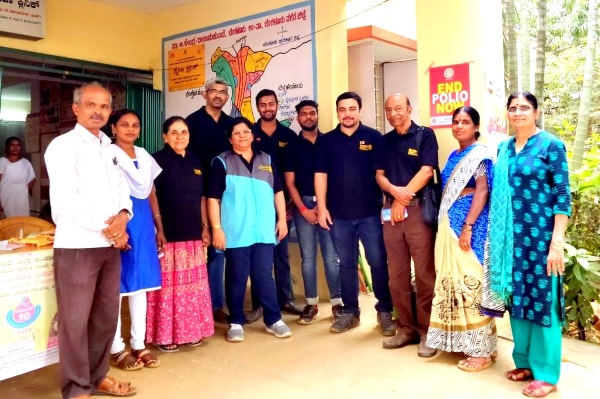IIBS Rotaractors had come for Polio immunization day at Bangalore. Rotary International has been working to eradicate polio since 1979, Rotary and its partners worldwide worked to reach 430 million children in 39 countries during polio immunization campaigns in 2017. On 10th March 2019, our sponsor club Rotary Heritage NCC coordinated Polio camps at Primary health care center, Rajankunte and also at CRPF booth and neighboring villages. IIBS Rotaractors assisted Rotary Heritage NCC in this Polio eradication camps.
Our sponsor club President of Rotary Heritage NCC Rtn Rashmi Tanksali says IIBS Rotaractors had come for Polio immunization day. RBHN appreciates their support like always. They are surely the best.
Rtn Rashmi Tanksali also informed that: Today's (10th March 2019, Sunday) Immunization report sent by Dr. Madhavi, Rajankunte PHC (Primary Health Centre) – the Target to immunize 3485 children, we did today 2914 children immunization, i.e., 83.6% also stated Next 3 days they will continue the Polio drops immunization door to door. Commendable work by the Health workers and volunteers”.
Polio: where we are now, The annotated guide to ending polio, by Diana Schoberg and Gwen Keraval: As the number of polio cases approaches zero, the challenges facing Rotary and its partners in the Global Polio Eradication Initiative are changing.
We still need to reach every child with the polio vaccine – and we’re using innovative strategies to do that, in spite of geopolitical uncertainties. But that’s only one part of our job. We’re tackling vaccine-derived poliovirus, which can begin to spread in places where vaccine coverage is low. We’re becoming disease detectives, following up on any shred of evidence that wild poliovirus might still be circulating. And we’re fine-tuning our plan to keep the world free of polio forever.
Here’s what you need to know about where we are now. Polio is an intestinal virus that is spread through contact with the feces of an infected person, which can contaminate water or food.
- The virus latches onto a receptor on the surface of a cell, multiplying in the lining of the intestines.
- It enters the cell and hijacks the cell’s own machinery to make copies of itself.
- The virus is released to infect neighboring cells, spreading from the digestive tract to lymph nodes and the bloodstream.
- The virus replicates and is excreted through feces, starting the cycle again.
See Also:
- More IIBS Rotactors to Serve Community at Bangalore - IIBS
- Drive 2 Inspire - Fun Car Rally by Rotary at IIBS Bangalore
- IIBS Rotaract Office Bearers Installation Program
- Blood Donation Camp Held by IIBS Rotaract Club, Bangalore
- The Rotaract Club of IIBS organized a Debate Competition in IIBS Bangalore Campus.
- Installation Ceremony of the Rotaract Club at IIBS Bangalore

